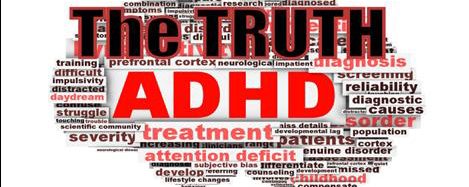ADHD is primarily associated with (1) Inattention, (2) Hyperactive motor activity and (3) Impulsivity. However, symptoms typically do not end there for many victims of ADHD. Instead, aggression seems to be a prevalent pathological characteristic of the disorder as well. In studies of children and adolescents with ADHD, it has been shown that many diagnosed subjects exhibit symptoms of:
- Overt Aggression: Direct assaults on the environment, such as “physical assaults, temper tantrums, verbal threats and oppositional or defiant behavior”(Disney et al., 1999)…and
- Covert Aggression: Furtive offensiveness (“Aggression that is hidden from vie”), such as “lying, stealing and cheating” (Disney et al., 1999)
Predominately, when ADHD is linked with Aggressive behavior the diagnosis is double fold, encompassing ADHD and a co-existing Conduct disorder (such as Oppositional Defiance Disorder).
The affects of this dual diagnosis have the potential to develop into more malignant forms of ADHD both in childhood and later in life. For instance, when ADHD is comorbid (exists at the same time) with a conduct disorder in children, subjects tend to exhibit more overtly offensive behavior, such as defiance of authority figures and aggressive moodiness during disciplinary activities; a reality that can be significantly frustrating to parents of ADHD victims, and can result in the alienation of children with such comorbid diagnosis.
In studies of children, adolescents and adults with both disorders, researchers have noted that this aggressive set of symptoms influence the severity and longevity of ADHD as a stand alone disorder. For instance, in certain, extreme cases, C.D. (conduct disorder) can progress into antisocial behavior in adulthood. Because only 30% of individuals with childhood ADHD maintain the disorder subsequent to their maturity into adulthood, it has been posited that those few cases in which ADHD is sustained into maturation, demarcate instances wherein the disorder is most acute and intense. Although, not all adults with ADHD have this pejorative Comorbidity, as this dual diagnosis seems to be most prevalent in populations of ADHD victims incarcerated in prison and/or drug treatment centers. Hence, some adults with ADHD are more well adjusted and evade the antisocial characteristics associated with Adult ADHD, exhibited as a progression of C.D. into maturation.
Thankfully, research regarding the affects of Stimulant medication (i.e. Ritalin, Adderrall and Concerta) on aggressive symptomology has indicated that treatment with such psychotropic prescriptions yield significant improvements in the exhibition of offensive conduct. Furthermore, it may be possible that there exists a subcategory of ADHD (combined with C.D.) that is resistant to psychotropic treatment altogether. No cause for alarm, though, as this has been shown to occur in only the extreme cases, from which, anti-social behavior develops into adulthood. Although the medical regiment may be lessened in children with comorbid ADHD and C.D. diagnosis, there is still some hope that this mechanism of treatment can induce less overtly aggressive psychopathologies in ADHD.
It seems that the consensus drawn from the research on the topic has indicated that in some cases, aggression can be tempered with psychopharmacology, but also that there may exist a subtype of ADHD, such that in the population in which ADHD and C.D. are co-existent, treatment is less effective than it is in the broader categorization of ADHD generally.
Yet although stimulant treatment may be less effective in this subgroup, there is still exists room for improving the unruliness of most children with ADHD through a combination of psycho-stimulant therapy and behavioral treatment. What’s more is that, the promising fact still remains, that only a small percentage of those with childhood ADHD sustain the disorder into adulthood, even though a significantly measured (in some studies up to 75% of children with ADHD), percentage of children with ADHD demonstrate a C.D. and ADHD comorbid diagnosis. This statistical finding indicates that the coexistence of C.D. and ADHD is an extremely prevalent occurrence, yet only progresses into adult ADHD in rare cases. Hence, the conclusion that it is to be drawn from these findings is a positive one, which points towards the inference that ADHD and C.D. co-existence is not, in fact, a be-all, end-all, indication of a malignant prognosis for your Comorbid child; but is instead a sign that the dual diagnosis is treatable with maturity, environmental interaction and behavioral interventions.


Thanks for sharing excellent informations. Your web-site is so cool. I’m impressed by the details that you’ve on this web site. It reveals how nicely you perceive this subject. Bookmarked this web page, will come back for more articles. You, my friend, ROCK! I found simply the information I already searched everywhere and just could not come across. What an ideal web-site.
My partner and I absolutely love your blog and find nearly all of your post’s to be just what I’m looking for. Do you offer guest writers to write content to suit your needs? I wouldn’t mind creating a post or elaborating on most of the subjects you write with regards to here. Again, awesome web log!